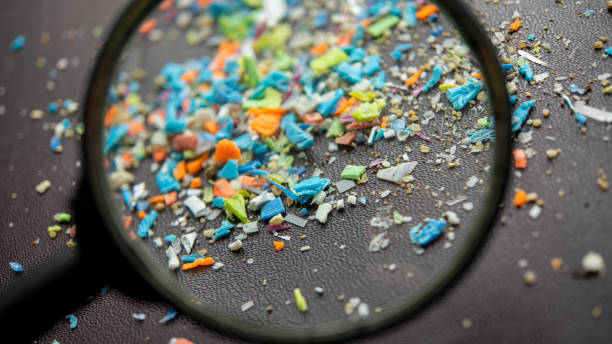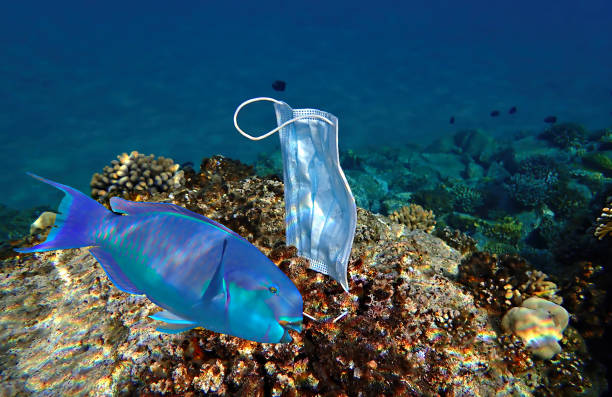When you think about ocean pollution, you might imagine plastic bottles, straws, or fishing nets floating in the sea. But surprisingly, your clothes could also be a big part of the problem. In fact, the environmental impact of fast fashion is far more serious than most people realize.
What Are Microplastics?
Microplastics are tiny plastic particles less than 5 millimeters in size. They’re often invisible to the naked eye. But their effects on the environment are massive.
Every time we wash synthetic fabrics like polyester, nylon, or acrylic, tiny fibres—called microfibres—break off and flow down the drain. Most wastewater treatment plants can’t catch them. So, these fibres make their way into rivers, lakes, and eventually our oceans.

The Environmental Impact of Fast Fashion
The rise of fast fashion has led to a surge in synthetic fibre usage. Polyester, for example, is now the most commonly used fabric worldwide. It’s cheap, versatile, and easy to mass-produce. But there’s a catch—it’s made from plastic.
Fast fashion items are often worn just a few times before being thrown away. Because they’re mostly made from synthetic materials, they don’t biodegrade. Instead, they break down into microplastics that persist in the environment for centuries.
🧵 At EcoThread, we believe fashion should never cost the Earth. That’s why we use organic, biodegradable fabrics like cotton, hemp, and linen. Explore our sustainable collection.
How Do Microplastics Affect Marine Life?
Once in the ocean, microplastics are mistaken for food by fish, crabs, and even plankton. Over time, these plastic particles accumulate in marine animals. This weakens their immune systems, disrupts reproduction, and can even lead to death.
What’s more alarming? These particles travel up the food chain. That means humans end up consuming them too. Microplastics have already been found in:
- Drinking water
- Sea salt
- Seafood
- Even human blood and lungs
Clearly, the environmental impact of fast fashion is not just about waste—it’s about health too.

What Can You Do About It?
The good news? You can make a difference—starting with your wardrobe. Here are some easy, impactful ways to reduce microplastic pollution from clothes:
Choose Natural Fabrics
Opt for clothes made from biodegradable materials. Cotton, hemp, wool, and linen don’t shed plastic when washed. They’re not only better for the planet, but also for your skin.
Wash Less, Wash Smart
Washing clothes less often reduces microfibre release. Use cold water, a gentle cycle, and fill up your load to minimize friction. You can also try liquid detergent instead of powder to reduce fibre shedding.
Use a Guppyfriend Wash Bag
Special filter bags like Guppyfriend or Cora Ball trap microfibres before they go down the drain. These are small steps that lead to big changes.
Support Ethical Brands
Choose clothing from brands that value sustainability and ethics. At EcoThread, we focus on organic, plastic-free fashion that’s handcrafted with care and purpose. No shortcuts. No pollution. Just conscious clothing.
✨ Shop sustainable women’s clothing now
Why It Matters
Every piece of synthetic clothing adds to the microplastic crisis. And with billions of people around the world doing laundry every week, the scale of the problem is enormous. But so is the power of collective action.
When you choose natural fibres, wash responsibly, and support ethical brands, you’re reducing the environmental impact of fast fashion—one outfit at a time.
Final Thoughts
Ocean pollution isn’t just about plastic bags or straws. It’s also about our closets. But the solution isn’t out of reach. Together, we can turn the tide.
Let’s wear clothes that clean—not pollute.
🌿 With every mindful purchase, you’re not just choosing style. You’re choosing sustainability, health, and a better future for our oceans.
🛍️ Internal Link Suggestion:
Link to your sustainable collection here:
👉 EcoThread.shop – Shop Conscious Clothing
🔗 External Reference Suggestion:
Learn more about the issue at Plastic Soup Foundation



